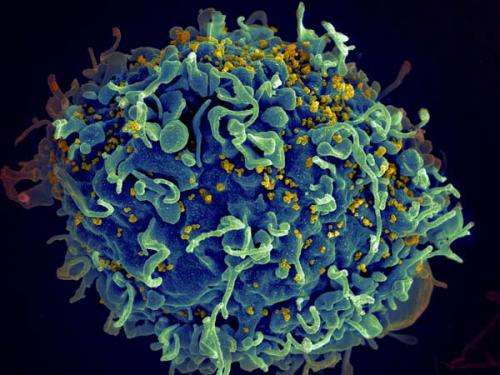More secondary schooling reduces HIV risk

Longer secondary schooling substantially reduces the risk of HIV infection—especially for girls—and could be a very cost-effective way to halt the spread of the virus, according to researchers from Harvard T.H. Chan School of Public Health. In a study in Botswana, researchers found that, for each additional year of secondary school, students lowered their risk of HIV infection by 8 percentage points about a decade later, from 25% to about 17% infected.
"These findings confirm what has been fiercely debated for more than two decades—that secondary schooling is an important structural determinant of HIV infection and that this relation is causal," said Jan-Walter De Neve, first author of the study and a doctoral student in the Department of Global Health and Population.
The study appears online June 28, 2015 in The Lancet Global Health.
HIV continues to be a major global health challenge, with an estimated 2.1 million people becoming newly infected each year. Although some have claimed that formal education, particularly for girls, acts like a "social vaccine" to reduce the spread of HIV—because of hypothesized factors such as increased exposure to information about HIV and prevention methods, or improved cognitive skills to make complex decisions—studies to date have produced conflicting evidence for such an association.
For the new study, researchers at Harvard Chan School worked with colleagues at Boston University and in Botswana, which—with about 22% of adults aged 15-49 infected with HIV as of 2013—has one of the highest HIV infection rates in the world. The authors were able to conduct a "natural experiment," thanks to a 1996 school reform measure in Botswana that made it easier and more beneficial for students to complete 10 years of education. The policy change resulted in an average 0.8 additional years of schooling among teens. By comparing cohorts of students who entered secondary school in or after 1996 with those in earlier cohorts, the researchers were able to estimate the impact of additional secondary education on the risk of HIV infection.
Senior author Jacob Bor, SD '13, assistant professor in the Department of Global Health at Boston University, explained, "It is difficult to isolate the effect of education on HIV risk from the complex web of co-factors such as personal motivation, psychological traits, socioeconomic status, and family background. In the absence of large-scale trial data, natural experiments can provide robust evidence to guide policy."
Researchers examined data from about 7,000 people who participated in the Botswana AIDS Impact Surveys—national household surveys that included HIV testing—and who were at least 18 years old at the time of the surveys.
The study found that additional years of secondary school (grades 8-12) were linked with significantly lower risk of HIV, particularly for women, whose HIV risk dropped by 12 percentage points with each added year of secondary school. No effect was found for people with less than nine years of schooling.
Looking at cost-effectiveness, the researchers found that while additional schooling is more expensive than some HIV prevention interventions (such as circumcision and treatment-as-prevention) it's similar to the upper range of estimates for pre-exposure prophylaxis (taking a daily pill to prevent HIV). However, unlike these other interventions, they noted that secondary schooling has large benefits beyond the reduction of HIV transmission, such as expanding economic opportunities.
More information: "Length of secondary schooling and risk of HIV infection in Botswana: evidence from a natural experiment," Jan-Walter De Neve, Günther Fink, S V Subramanian, Sikhulile Moyo, and Jacob Bor, The Lancet Global Health, online June 28, 2015, DOI: 10.1016/S2214-109X(15)70161-0

















